CCCC.0: Sources of emissions
Sources of CO2 emission
Sources of CO2 emission
Carbon footprint
Distribution and Inequalities of emissions
GDP versus emissions
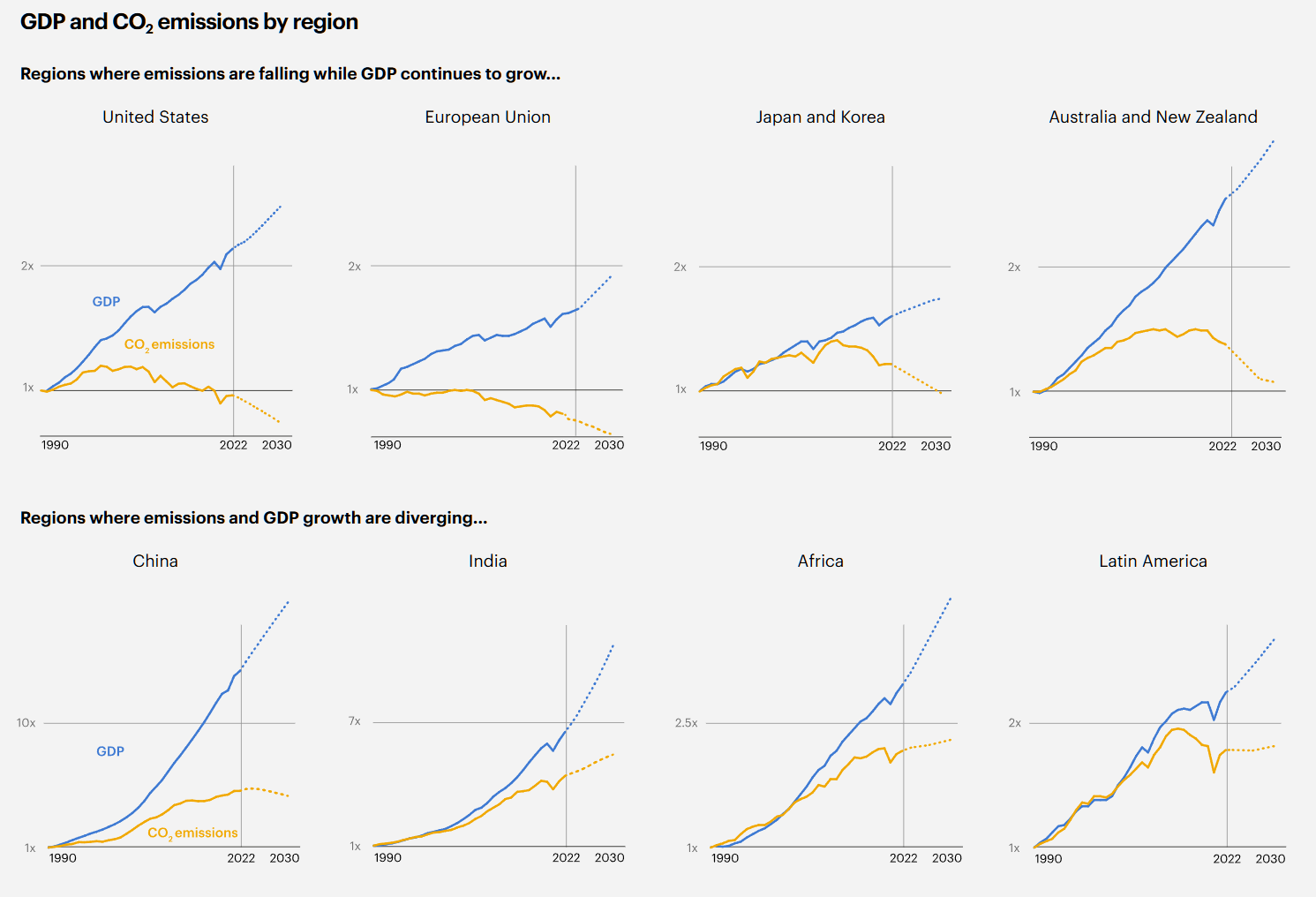
Country GDP and emissions
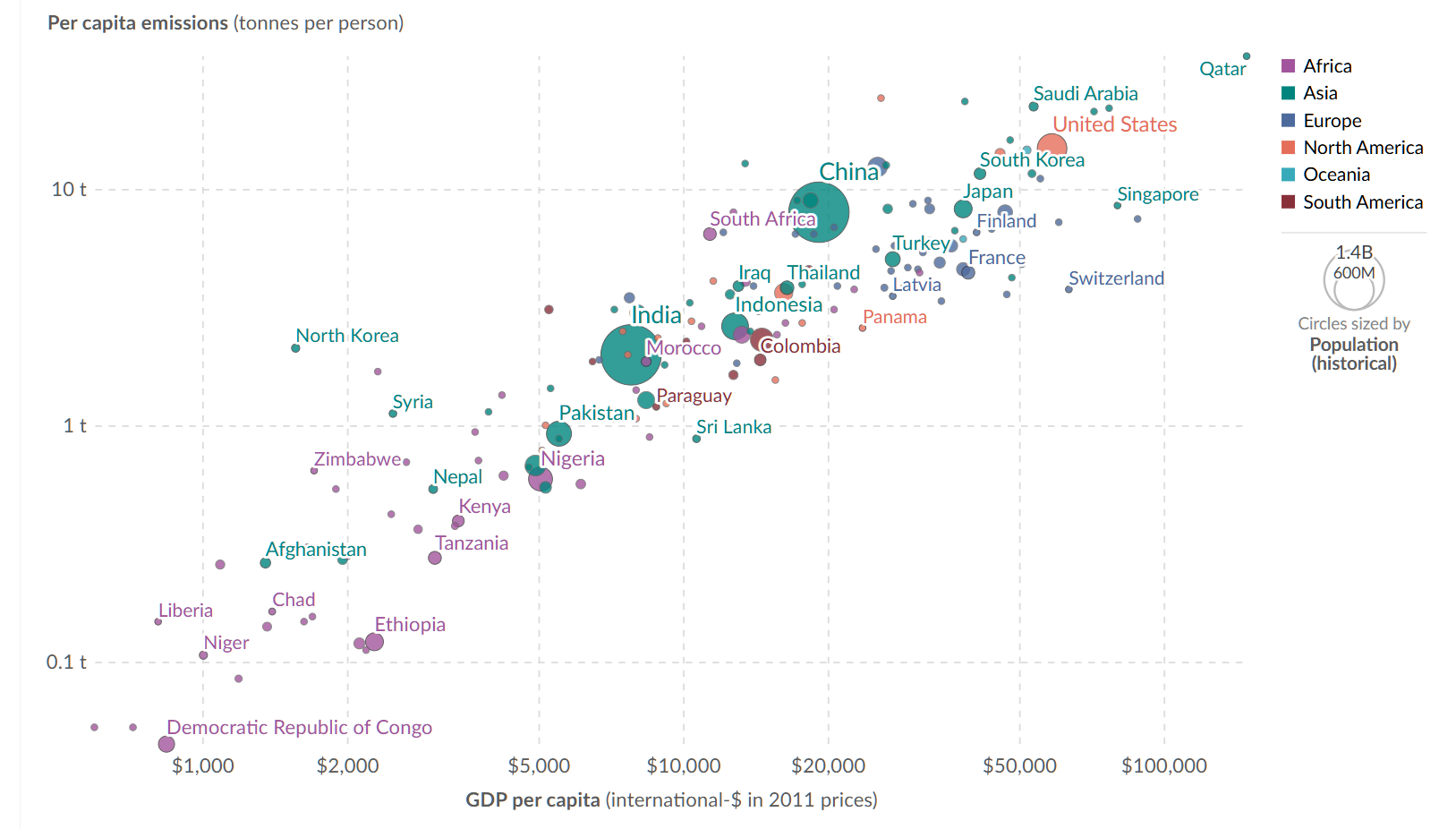
- Among a panel of 70 countries elasticity between income and emissions is .7 10% increase in GDP 7% increase in emissions
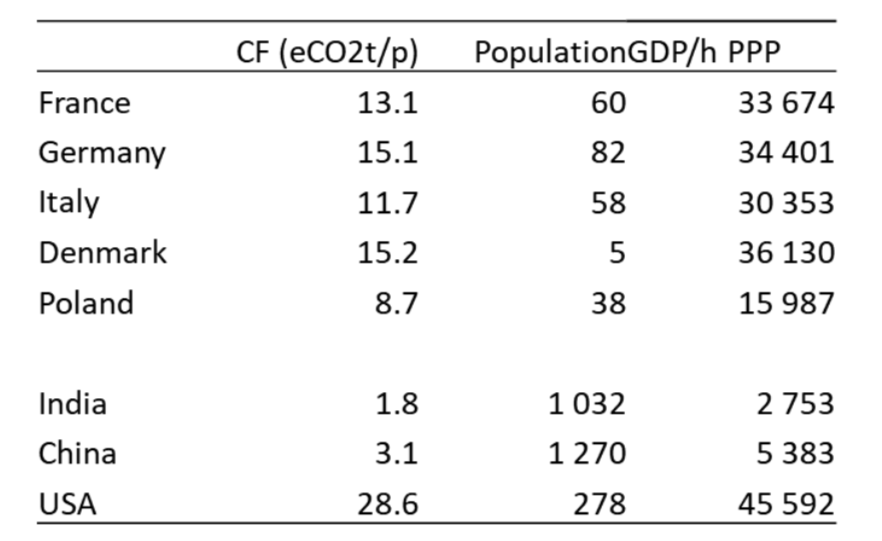
Kuznets vs. Okun elasticities
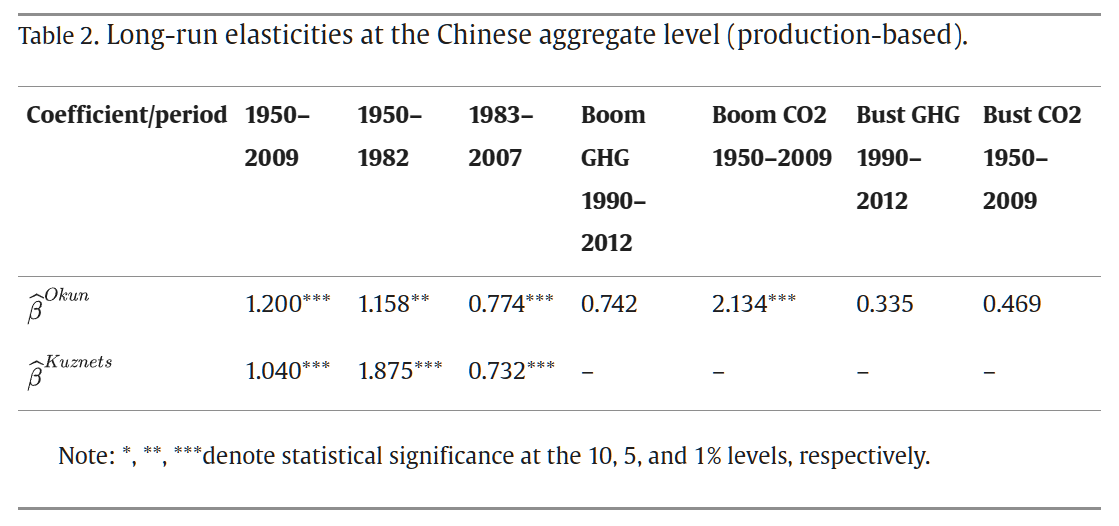
- Making a distinction between cyclical response of emissions to GDP
- from long term response
- strong evidence in both case of a lower than 1 elasticity
On world data
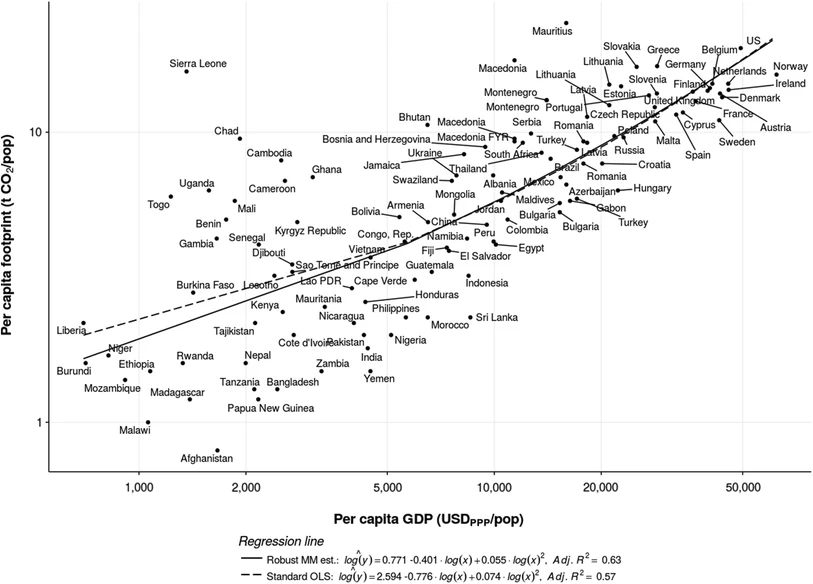
Carbon footprint
Sources of CO2 emission
Carbon footprint
Distribution and Inequalities of emissions
Consumer versus producer approach
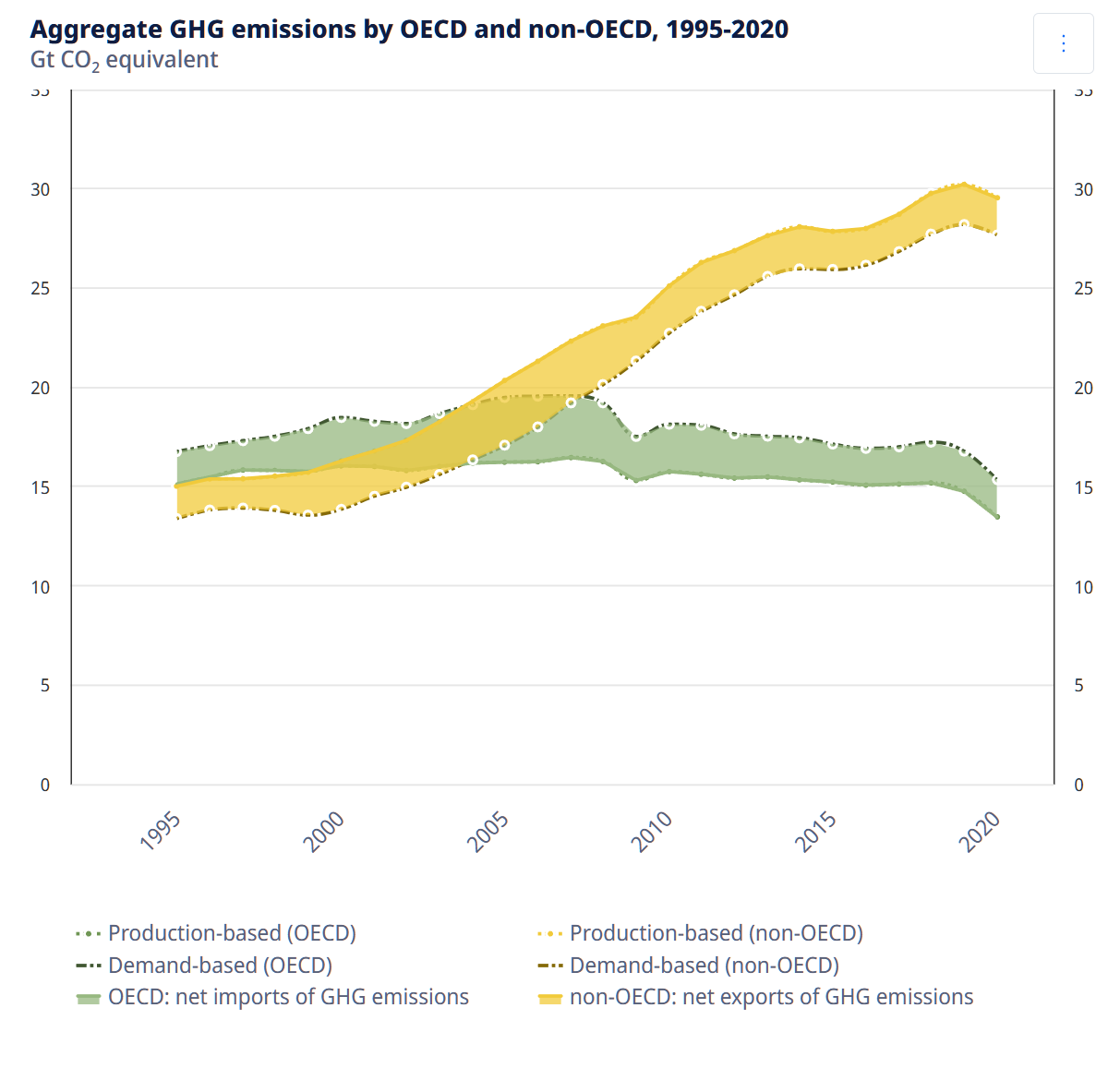
definition: Carbon footprint, amount of carbon dioxide emissions associated with all the activities of a person or other entity.
implies a notion of responsability: who is reponsible? the consumer (end of production) or the producer (means of production).
Carbon footprint, in IO acceptation, is the emissions of [GHG, CO2] from the consumer point of view, including direct emissions (fuel for a car, heating), indirect emissions (from producing a good or a service, privatly or publicly provided) produced nationaly or imported Carbon footprints of all consumers add up to total emissions
A carbon footprint can be defined for other entities, loosing additivity (double and no count alike)
- OECD Greenhouse gaz datasets
- Lenzen, Manfred, et Joy Murray. « Conceptualising environmental responsibility ». Ecological Economics, Special Section: Ecological Distribution Conflicts, 70, no 2 (15 décembre 2010): 261‑70. https://doi.org/10.1016/j.ecolecon.2010.04.005.
Complexity of energy flows
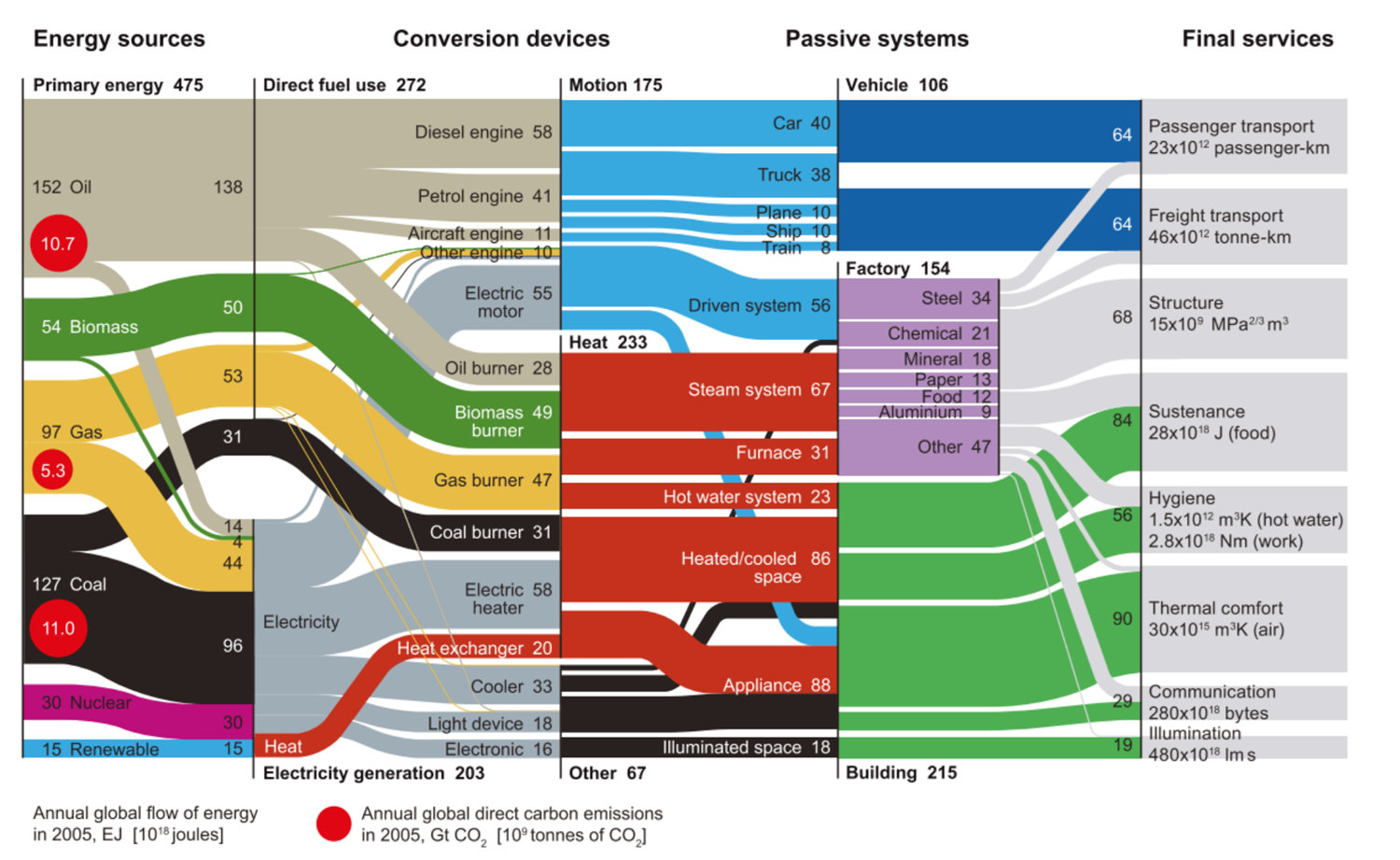
Final Uses
When based on final usage, one can split CO2 emission to usage
- Food accounts for around 15 to 20%
- Shelter maintenance and operation for another 20%
- Mobility is around 20%
- Goods&services production are around 30%
For a sharp reduction of emission, all usages have to reduce
The case for food
- All vegetarian/vegan could reduce food emissions by 30%
- Fat and Amidon/Feculent are the most efficient diet
- Pork/Poultry equivalent to fruits in terms of GHG/kcal
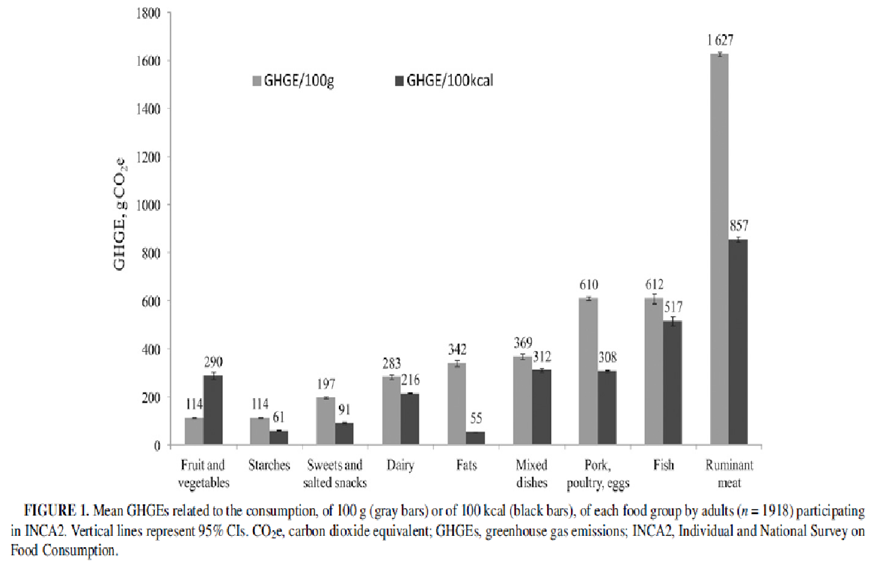
Vieux F., Soler L., Touazi D. and Darmon N., 2013. “High nutritional quality is not associated with low greenhouse gas emissions in self-selected diets of French adults 1 – 3”, (9). doi:10.3945/ajcn.112.035105.

Carbon footprint for France
- France : huge difference between inventory (residential, production) and footprint :::: columns
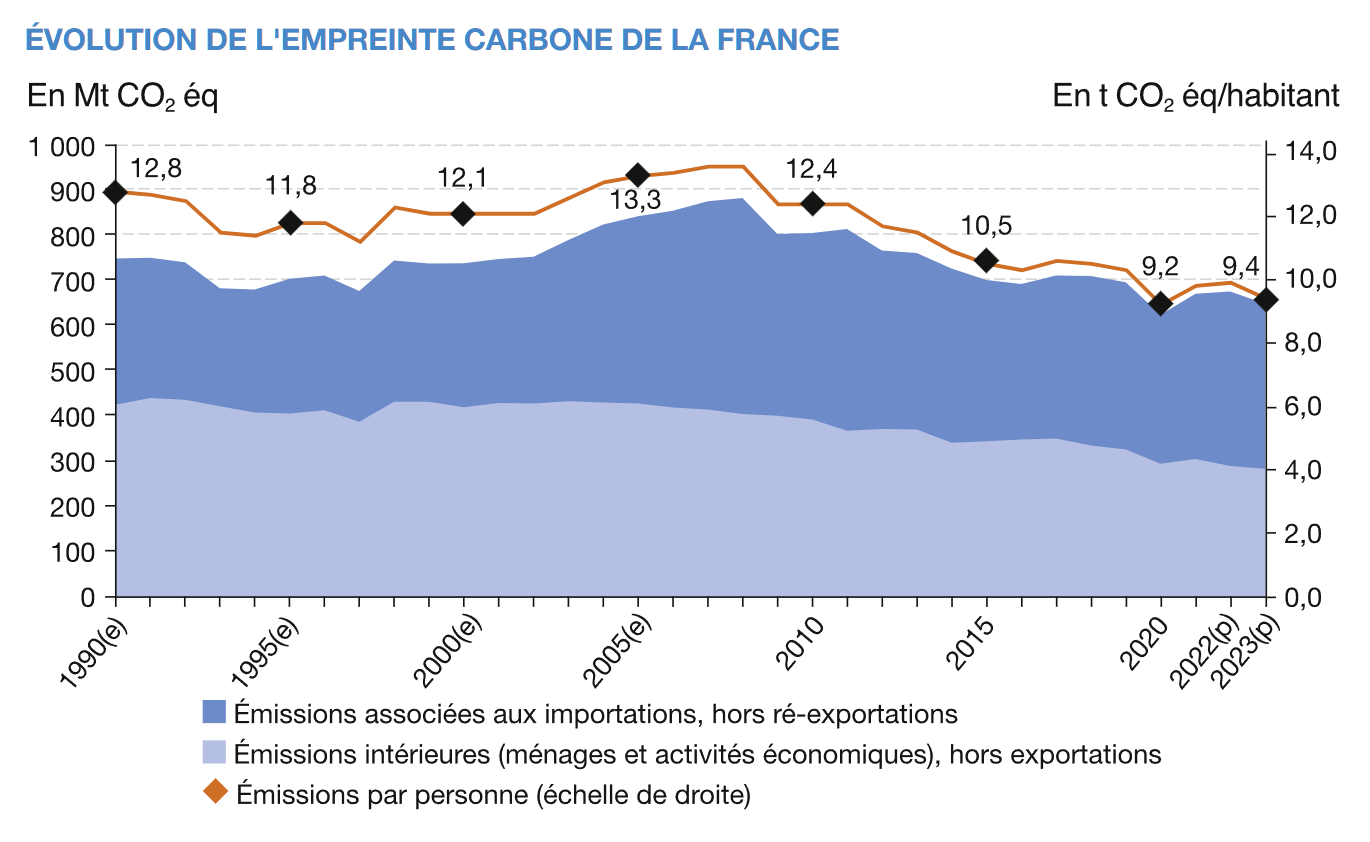
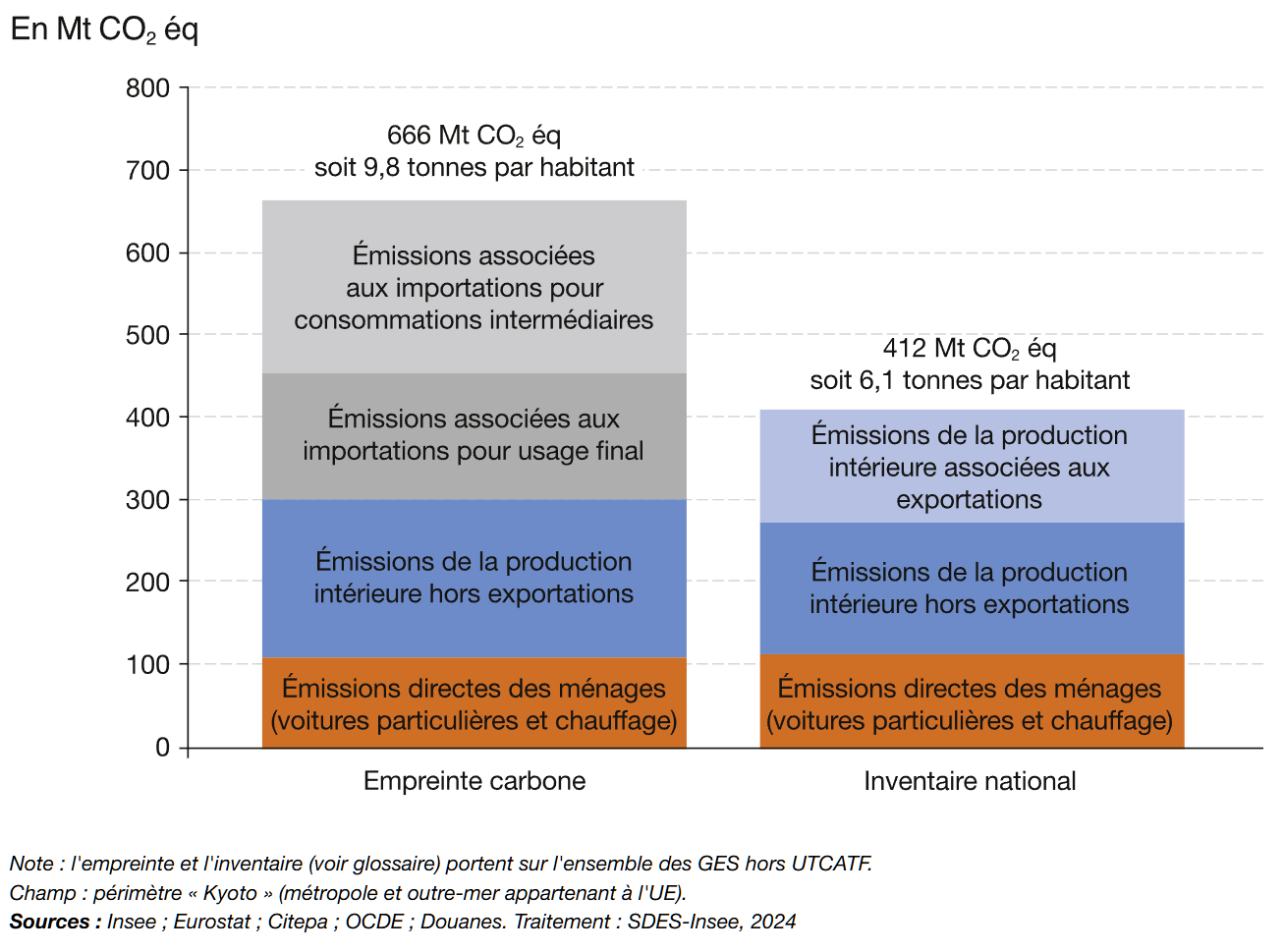
Carbon footprint for Europe (selection)
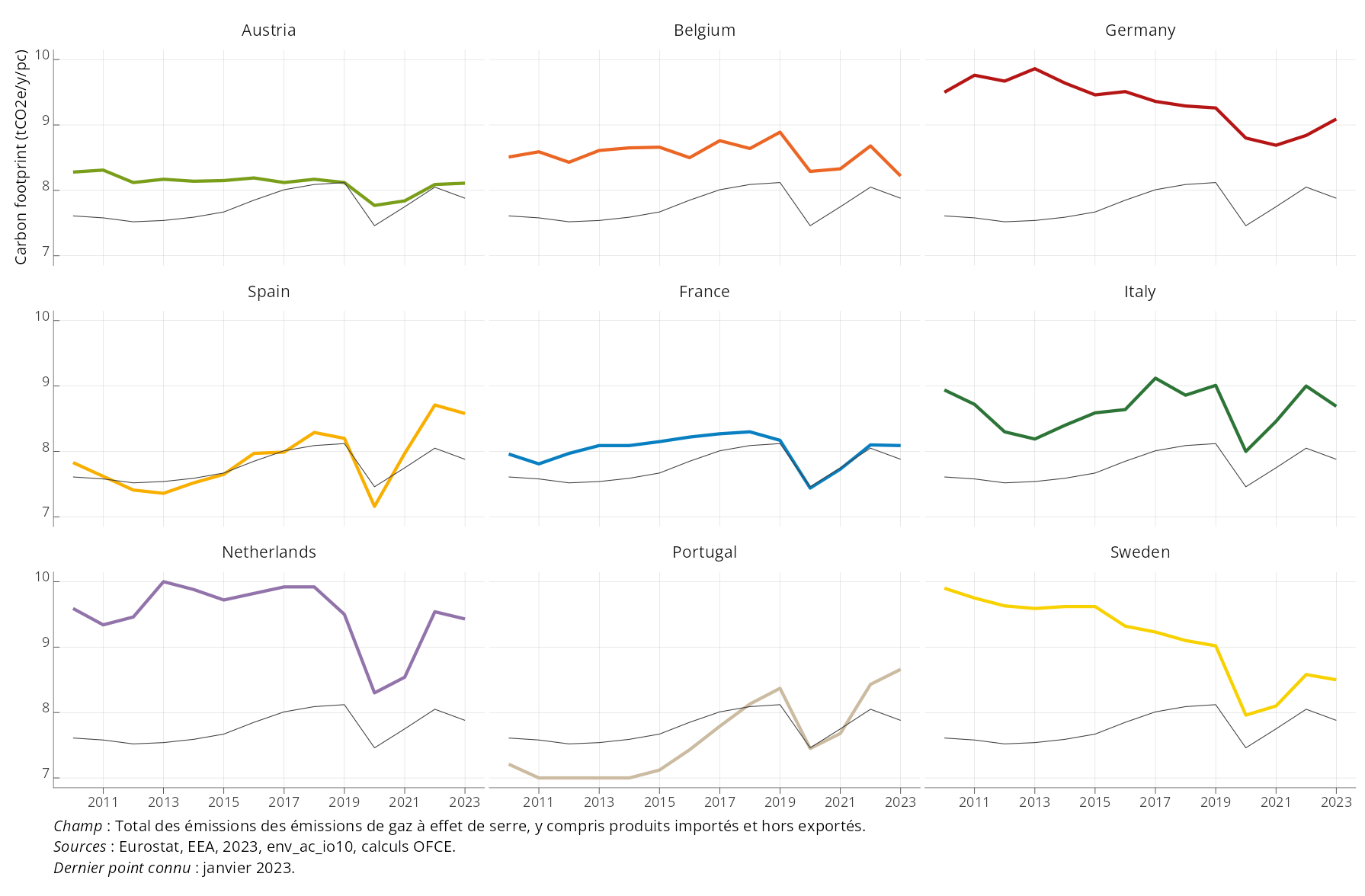
Distribution and Inequalities of emissions
Sources of CO2 emission
Carbon footprint
Distribution and Inequalities of emissions
Chancel and Piketty on CO2 emission distribution
very influential papers, plus databases
based on a simple idea : we know (quite well) income distribution (for each centile) for a large sample of countries (WID)
- by applying a monotonous transformation to income, approximation of emissions
- mostly consumer based, ie 2 steps income consumption emissions
- key elasticity are needed. Roughly, income to consumption from .9 (2015) to .6 (2021), consumtion to emission ~1
- An important deviation (2021) from consumer pow: savings cumulate to wealth, onwership of productive capital induce responsability (1/3 of emissions)
Chancel Piketty 2015
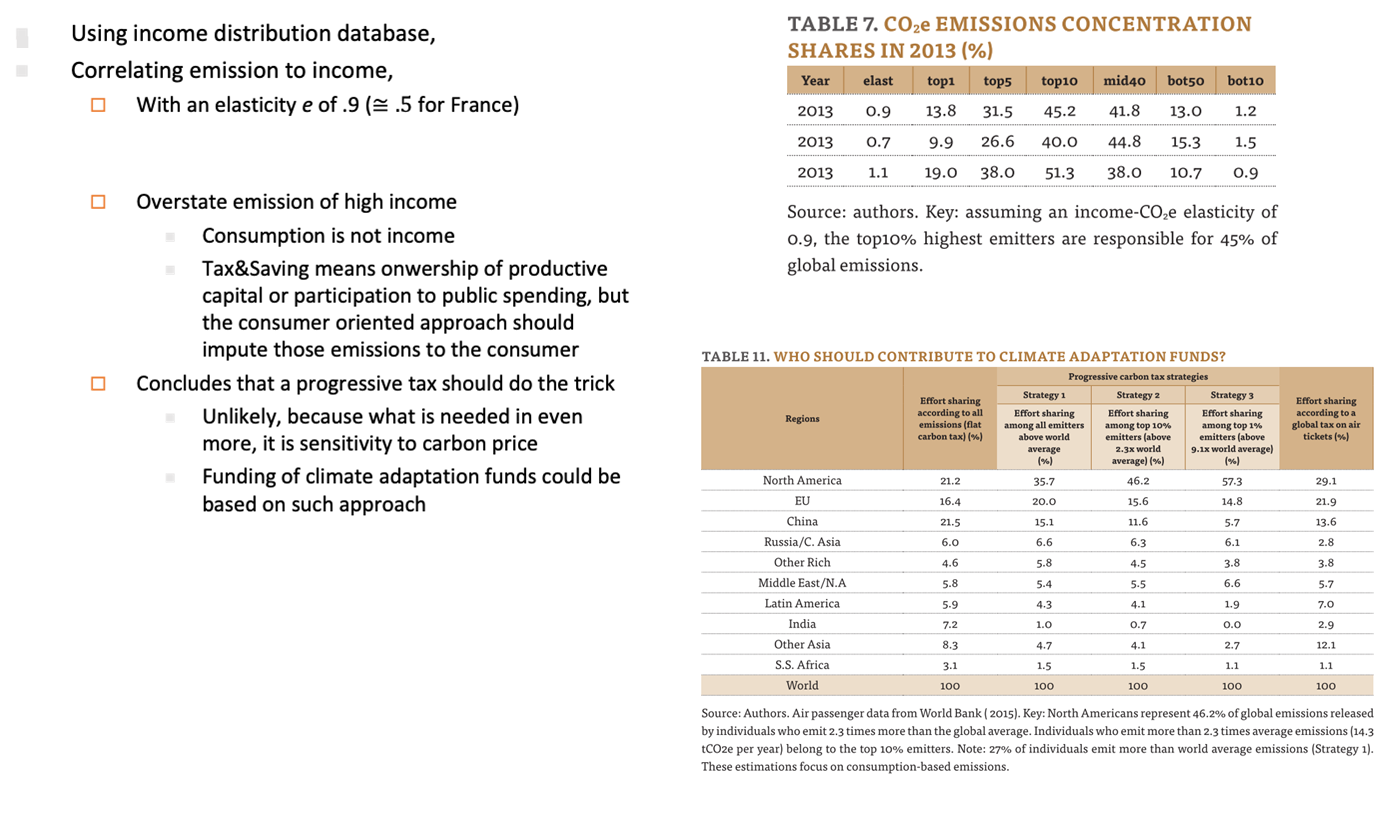
- strong conclusion on who should contribute
- critics: emission elasticity to income of .9 is not convincing
- a billionaire earns 10,000 more than average guy, you can’t emit 100,000 tCO2
- According to Lucas, Kate Perry just emitted 18 tCO2 flying in space, 350 tCO2 if indirect emissions are take in account
- High end life style could go to a few hundred’s tCO2, hardly. $$10 to $$30 average guy.
- one hour helicopter a day (!) 150 tCO2/y
- .9 elasticity to income overstate share of rich people
Chancel strikes back: 2021
No more income elasticity but a consumption elasticity (.9), consumption to income elasticity near 0 for high income
And imputation of capital investiment to owners! - savings are proportional to income (elasticity growing with income, of 1 with highest income, you can’t consume infinitly, and even there is a trap hidden there)
No double count (because overall emissions are redistributed) but a high share of emissions are imputed to the wealthiest due to the share in wealth : 70% of the footprint of the latest decile is from wealth
But, in contradiction with the consumer based approach where emissions are imputed, including capital cost
- hybrid responsibility
- consumers consume
- producers choose place to produce, ways to produce, induce consumption on consumers (planned obsolescence, advertisment)
- what about state regulations imposed or removed? who’s responsibility?
- voter’s responsibility? but when not in a democracy? acceptation of authority means non responsibility?
- thought experiment: what if one’s nationalize every means of production (and does not stop consuming) who is responsible?
Recap.
| reference | scope | p90-100 CO2 emissions | p90-100 share of emissions |
|---|---|---|---|
| Piketty Chancel 2015 | France | 30.5/ind. | 32% |
| Chancel 2021 (pub. 2022) | Europe | 32-38/ind. | |
| Theine et al 2022 | Austria | 38/household 17/ind. |
|
| Malliet 2020 | France | 38/household 18/ind. |
16% |
| SEI Emissions inequality1 | France (see for more) | 16.5/ind. | 26% |
Beyond income there are other factors
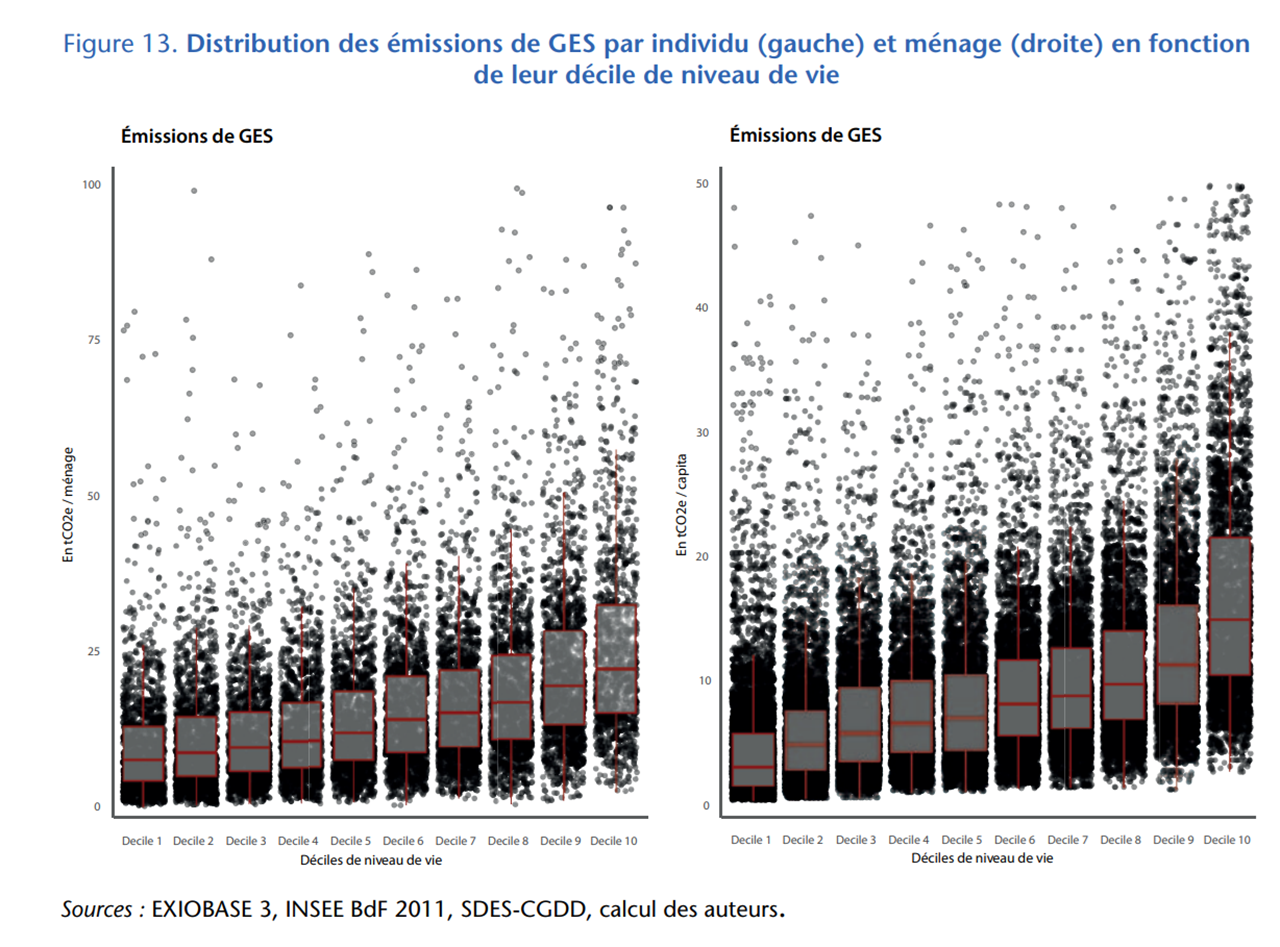
Elasticity (and convention) critical but there is more:
- the Cheval Blanc or Ferrari (Cheval Cabré) or effect
- costs 10 to 100\(\times\) more than your average wine bottle or car or oil
- implies for production the same quantity of CO2 (if not less for organic oil)
- despite higher emission/km, less km done with your ferrari
- Today imputation is made by dividing total emission by value, to get a tCO2 content per €
- by categories of product
- household/individual emission based on (when made seriously) household survey (budget des familles in France), whith a tCO2 per euro content (such as base Empreinte from Ademe) except for direct emissions (car fuel, shelter energy consumption)
- works well only for … plane: from economy to business and even private jet, fare price reflects mostly fuel costs
- for all other goods (80% of the carbon footprint), it is all wrong for distribution!
- How to solve that? register all consumption volume (kg) for a large spectrum of qualities (cars, food, smartphones) and use mass measurment instead of value
- Or establish a way to measure emission for each products, folowing the chain value (making a nuance between organic apple juice from your local producer from orange juice with high water consumption from Florida, boat transported)



Important references
Lenzen, Manfred, et Joy Murray. « Conceptualising environmental responsibility ». Ecological Economics, Special Section: Ecological Distribution Conflicts, 70, no 2 (15 décembre 2010): 261‑70. https://doi.org/10.1016/j.ecolecon.2010.04.005.
Mikayilov, Jeyhun I., Fakhri J. Hasanov, et Marzio Galeotti. « Decoupling of CO2 emissions and GDP: A time-varying cointegration approach ». Ecological Indicators 95 (1 décembre 2018): 615‑28. https://doi.org/10.1016/j.ecolind.2018.07.051.
Freire-González, Jaume, Emilio Padilla Rosa, et Josep Ll Raymond. « World Economies’ Progress in Decoupling from CO2 Emissions ». Scientific Reports 14, nᵒ 1 (3 septembre 2024): 20480. https://doi.org/10.1038/s41598-024-71101-2.
World Inequality Database WID (colead by L. Chancel)
Stockholm Environment Institute https://emissions-inequality.org/

CCCC.0: Sources of emissions EoE 2025: The Age of Constraints